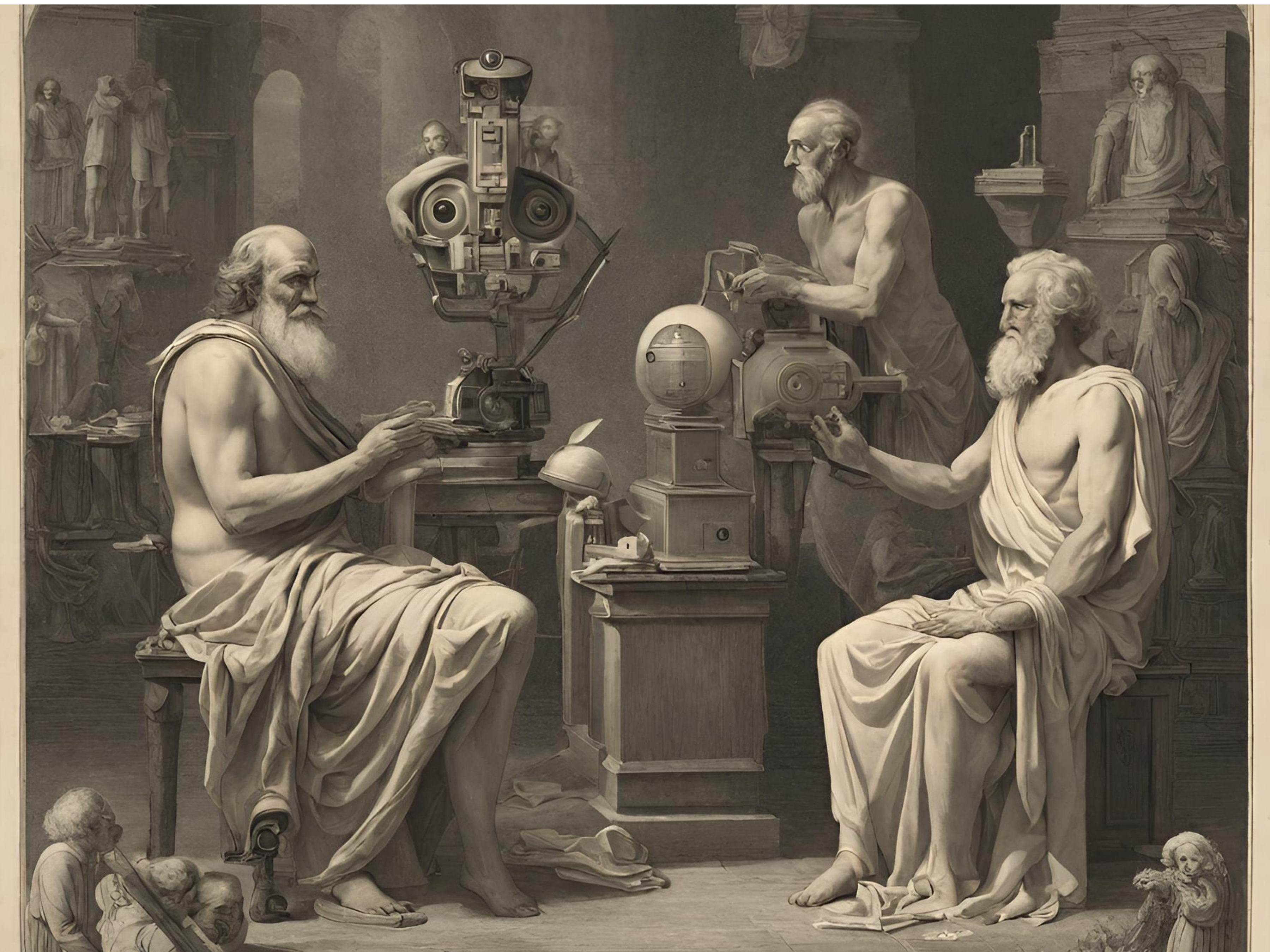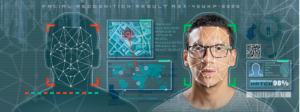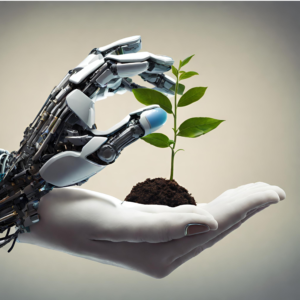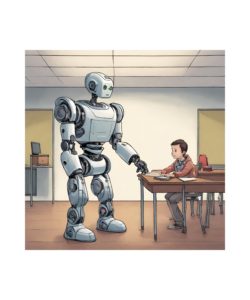Artificial intelligence (AI) is one of the most fascinating and influential fields of science and technology today. It can potentially transform various aspects of our lives, from health care and education to entertainment and business. But how did AI come to be? What are the key milestones and breakthroughs that have shaped its history? And what are the current and future challenges and opportunities for AI?
In this blog post, we will explore the complete AI timeline, from the origins of the concept to the latest developments and trends. We will highlight some of the most important events, achievements, and people who have contributed to the evolution of AI over the decades. We will also discuss some of the ethical, social, and economic implications of AI, as well as the future directions and possibilities for this exciting field.
The Origins of AI: From Philosophy to Computing
The idea of creating machines or systems that can think, reason, and act like humans or animals has been a long-standing philosophical and scientific quest. Ancient myths and legends often feature stories of artificial beings, such as the golems of Jewish folklore, the mechanical birds of ancient China, or the automata of Greek mythology.
In the 17th and 18th centuries, philosophers such as René Descartes, Gottfried Leibniz, and Thomas Hobbes attempted to explain human cognition and behavior in terms of mechanical or mathematical principles.
In the 19th and early 20th centuries, inventors and engineers such as Charles Babbage, Ada Lovelace, Alan Turing, and John von Neumann laid the foundations for modern computing and information theory, which are essential for AI; however, the term “artificial intelligence” was not coined until 1956, when John McCarthy, a computer scientist at Dartmouth College, organized a summer workshop with other prominent researchers, such as Marvin Minsky, Claude Shannon, and Herbert Simon, to discuss the possibility and methods of creating machines that can exhibit intelligence. This workshop is widely considered the birth of AI as a distinct field of study. McCarthy defined AI as “the science and engineering of making intelligent machines” 1.
The Early Years of AI: From Logic to Learning
The first decades of AI research were marked by optimism and enthusiasm, as well as by some remarkable achievements and challenges. Some of the early AI systems focused on using logic and rules to solve specific problems, such as playing chess, proving mathematical theorems, or understanding natural language. For example, in 1956, Allen Newell, J.C. Shaw, and Herbert Simon developed the Logic Theorist, the first AI program, which could prove theorems in symbolic logic 2. In 1957, Frank Rosenblatt invented the perceptron, the first neural network, which could learn to recognize simple patterns 3. In 1961, James Slagle created SAINT, the first program that could solve calculus problems 4. In 1964, Joseph Weizenbaum created ELIZA, the first chatbot, which could simulate a psychotherapist 5. In 1969, Stanford Research Institute built Shakey, the first mobile robot that could perceive and navigate its environment 6; however, these early AI systems also faced some limitations and difficulties, such as the brittleness of rule-based systems, the complexity of natural language and common sense reasoning, and the computational cost of learning and search algorithms. Some of these challenges were highlighted by influential critics, such as John Searle, who argued that AI systems cannot truly understand meaning or intentionality 7, and Hubert Dreyfus, who argued that AI systems cannot capture the tacit and contextual aspects of human intelligence 8. These critiques, along with the lack of funding and resources, led to the first AI winter, a period of reduced interest and progress in AI, in the mid-1970s.
The Revival of AI: From Expert Systems to Neural Networks
The second wave of AI research emerged in the late 1970s and 1980s, with the development of expert systems, which are programs that use knowledge and inference to provide advice or solutions in specific domains, such as medicine, engineering, or finance. Some of the notable expert systems include MYCIN, which could diagnose infectious diseases 9; DENDRAL, which could identify chemical compounds; and XCON, which could configure computer systems. Expert systems were successful in demonstrating the practical applications and commercial potential of AI, as well as in advancing the fields of knowledge representation and reasoning; however, expert systems also had some drawbacks, such as the difficulty of acquiring and maintaining domain knowledge, the inability to handle uncertainty and ambiguity, and the lack of generalization and adaptation. These limitations, along with the competition from Japan’s Fifth Generation Computer Systems project, which aimed to create a new generation of intelligent computers based on logic programming and parallel processing, led to the second AI winter, a period of stagnation and disappointment in AI, in the late 1980s and early 1990s.
The third wave of AI research began in the late 1980s and 1990s, with the resurgence of neural networks and machine learning, which are techniques that enable systems to learn from data and experience, rather than from predefined rules and knowledge. Some of the factors that contributed to this revival include the availability of large amounts of data, the improvement of computational power and hardware, the development of new algorithms and architectures, and the integration of different AI paradigms, such as symbolic, connectionist, and evolutionary. Some of the notable achievements and milestones of this period include the invention of the backpropagation algorithm, which enables efficient training of neural networks;the creation of the World Wide Web, which provides a vast source of information and data; the development of the Cyc project, which aims to create a comprehensive common sense knowledge base; and the victory of IBM’s Deep Blue, which defeated chess world champion Garry Kasparov in 1997.
The Current State of AI: From Big Data to Deep Learning
The fourth and current wave of AI research started in the 2000s and continues to the present day, with the emergence of big data, cloud computing, and deep learning, which are technologies that enable the processing and analysis of massive and complex data sets, as well as the creation and deployment of powerful and scalable AI systems. Some of the factors that have fueled this wave include the proliferation of digital devices and platforms, such as smartphones, social media, and e-commerce, the advancement of scientific and engineering disciplines, such as neuroscience, biology, and robotics, and the increase of public and private investment and collaboration in AI research and development.
Some of the notable achievements and trends of this period include the development of the ImageNet project, which provides a large-scale image database and a benchmark for image recognition; the invention of the convolutional neural network, which enables high-performance image processing and computer vision; the creation of the AlphaGo program, which defeated Go world champion Lee Sedol in 2016; the development of the Generative Adversarial Network, which enables realistic image synthesis and manipulation; the launch of the Alexa, Siri, and Google Assistant, which provide voice-based personal assistants and smart speakers; and the release of the GPT-3 model, which enables natural language generation and understanding.
The Future of AI: From Challenges to Opportunities
The future of AI is uncertain and unpredictable, but also exciting and promising. AI has the potential to bring many benefits and opportunities for humanity, such as enhancing health and well-being, improving education and learning, increasing productivity and innovation, and solving global and social problems; however, AI also poses many challenges and risks, such as ensuring ethical and responsible use, protecting privacy and security, preventing bias and discrimination, and ensuring human dignity and autonomy; therefore, the future of AI depends not only on technical and scientific progress, but also on the social and cultural values, norms, and policies that shape and govern its development and deployment.
Some of the possible directions and scenarios for the future of AI include the development of artificial general intelligence, which is the ability of a system to perform any intellectual task that a human can do; the creation of artificial superintelligence, which is the ability of a system to surpass human intelligence in all domains and dimensions; the emergence of artificial consciousness, which is the ability of a system to have subjective experience and self-awareness; and the integration of artificial and human intelligence, which is the ability of a system to augment and enhance human capabilities and potential.
Conclusion
In this blog post, we have explored the complete AI timeline, from the origins of the concept to the latest developments and trends. We have highlighted some of the most important events, achievements, and people who have contributed to the evolution of AI over the decades. We have also discussed some of the ethical, social, and economic implications of AI, as well as the future directions and possibilities for this exciting field.
We hope that this blog post has given you a comprehensive and insightful overview of the history of AI, as well as a glimpse of its future. AI is a fascinating and influential field of science and technology, that has the potential to transform various aspects of our lives, for better or for worse; therefore, it is important to understand its past, present, and future, and to engage in its development and governance, responsibly and ethically. AI is not a fixed or static phenomenon, but a dynamic and evolving one, that reflects and affects the human society and culture that creates and uses it; therefore, the history of AI is not only a history of machines and algorithms but also a history of ideas and values, of challenges and opportunities, and dreams and realities. We hope that by learning from the past, we can better understand the present, and shape the future of AI, and of ourselves.




